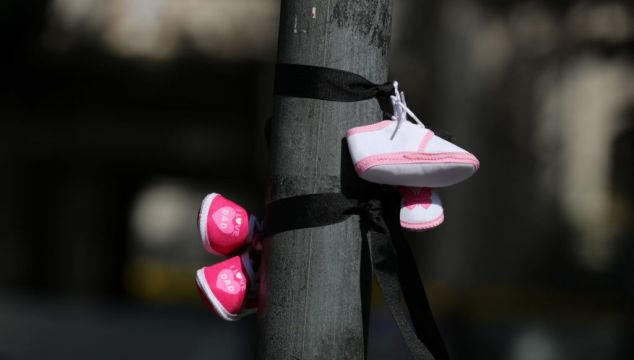The High Court is to have an additional, short hearing for further submissions in the actions taken by two women over the final report of the Commission of Investigation into mother and baby homes.
At the November hearing, Mr Justice Garrett Simons said he would deliver his judgment on December 9th, but on Thursday he said he came across a “number of issues” while preparing his judgment, adding he would like these answered by the parties.
The judge said it was a “very difficult case, but it is also a very important case, and it is essential I get it right”. He said he wanted to ensure he understood all of the submissions clearly before delivering his judgment.
The cases of Philomena Lee, now in her 80s and living in England, and Galway-based Mary Harney, who is in her 70s, both claimed the final report did not accurately reflect their evidence to the committee.
Ms Lee was sent to Sean Ross Abbey mother and baby home in Co Tipperary when she became pregnant at 18, while Ms Harney was born in Cork’s Bessborough mother and baby home.
Lead cases
They were chosen as lead cases to address a core claim made in nine separate but similar actions concerning the scope of section 34 of the Commission of Investigation Act.
Both women submitted they are readily identifiable in the final report, despite not being named, meaning the commission was required, under section 34 of the Act, to provide them with the draft report so they could make submissions on it, including on the treatment of their evidence.
Mr Justice Simons said he wanted further submissions on the issue of identification, which was a key component of the hearing. He asked for clarity on the level of knowledge to be attributed to the “hypothetical reader” of the final report. Specifically, he queried if it should be assumed that the reader would have carried out an internet search.
A web search of two nuns who are named in the section Ms Lee claims is about her experience will return Ms Lee’s name as the first result, said the judge, asking if this was a fact the court should take into account.
Counsel for Ms Lee and Ms Harney, Michael Lynn SC, had argued that due to the women’s high profiles they were identifiable in the report and, thus, section 34 was triggered. He pointed to “highly publicised” information about Ms Lee, whose life was made the subject of a book and later a film, starring Judi Dench.
The State parties, represented by Eoin McCullough SC, denied the claims.
Applicability of defamation laws
Mr Justice Simons said he also had further queries in relation to the applicability of defamation laws. He said he understands a person can be defamed even if only those close identify him or her from the material in question.

He also asked for further submissions in relation to section 35 of the Act and, in particular, he wondered what is the “precise nature” of the breach of fair procedure the applicants are alleging. He said he believed this was a “very important” issue that wasn’t fully teased out in arguments.
Mr Justice Simons said his request for clarification was not to be perceived as criticism of the original submissions.
The judge also asked about the relevance of the European Convention on Human Rights (ECHR), considering the inquiry took place after its introduction in 2003, but the events occurred prior to this.
The case will return before the court in mid-December, with the Judge expected to deliver judgment in early January.







